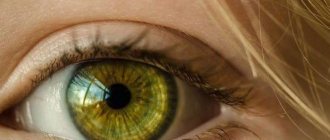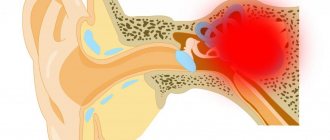Sleepwalking is a common phenomenon. Some people think that it is completely harmless: just a person walking around the house at night without much meaning. Others are afraid of such unfounded movements.
At the same time, somnambulism (this is how this problem is called in modern medicine) is quite widespread: it is observed in every fiftieth person on the planet. Accordingly, you need to know about it in order to understand in which cases you need help, and in which cases it will go away on its own.
Until the end of the 18th century, sleepwalking was considered a manifestation of the activity of evil spirits. Incomprehensible behavior, out of all standards, was thought-provoking, and also usually caused fear, bewilderment and, of course, misunderstanding. It was difficult for ordinary people to rationally explain such a situation. Accordingly, they fought the enemy using improvised methods: they read prayers and repented. Punitive measures were also applied to those who acted differently: there were often cases when they were simply accused of witchcraft and fought, like with other witches. Today, no one takes drastic measures against sleepwalkers, but at the same time, sudden episodes of sleepwalking can frighten even information-savvy modern citizens.
"It is not recommended to wake up." Somnologist on how to live with a sleepwalker Read more
Why does a child grind his teeth in his sleep: reasons
Experts are not always sure about the causes of bruxism. There are several options why children experience grinding at night:
- Incorrect bite. This is when the upper and lower teeth are not aligned properly;
- Other babies do it as a response to pain, such as ear pain or teething. Children may grind to relieve pain;
- If you have a disease - epilepsy, cerebral palsy. Or the child is taking certain medications that may develop grinding;
- During adolescence, teeth grinding at night can be caused by smoking and drinking alcohol;
- Heredity. Bruxism can be passed on to children if parents suffer from this disease;
- Another reason is stress. This is usually nervous tension or anger. For example, your child may be anxious about a test at school or because of a change in their routine;
After the age of six, many children outgrow teeth grinding.
Signs of the disorder
Typically, patients suffering from somnambulism get out of bed, walk, talk, and perform various actions. At first glance, these people appear to be in a state of wakefulness. However, if you carefully observe them, you will notice characteristic features. The patient's movements are slow. The eyes are open, but the person does not perceive what is happening, does not see or hear anything around. Can't wake him up. There are cases when people, during an attack, opened the lock of the front door and started the car.
But not all people suffering from somnambulism are so active. There are patients who stand or sit in bed.
As a rule, episodes of sleepwalking are short-lived. They stop on their own after about half an hour. The man returns to bed and falls asleep. After waking up, he does not remember the night attack.
Diagnostics
Most children who have this problem during night or daytime sleep do not even know about it. Therefore, most often, parents diagnose the problem.
Some signs:
- Teeth grinding when your baby sleeps;
- Complaints of pain in the face or jaw after waking up in the morning;
- Pain when chewing.
If you experience any of these signs, contact your dentist to examine your mouth for wear and damage. Spray air and water on teeth to test sensitivity.
If damage is found, the dentist may ask your child several questions, such as:
- How do you feel before bed?
- Are you worried about anything at home or at school?
- Are you angry with someone?
- What do you do before bed?
The exam will help the dentist understand whether the cause is anatomical (misaligned teeth) or psychological (stress). Select an effective treatment plan.
How to cope?
When a person or his loved ones begin to walk at night without any purpose and without consciousness, the first questions that arise are what to do about it, where to go, who will help? “If signs of sleepwalking appear more than twice a month, you should consult a specialist (neurologist or neuropsychiatrist, as well as a psychiatrist). To diagnose sleepwalking, a number of studies are carried out, including MRI of the brain, electrocardiogram, and polysomnography. Complex treatment should be carried out only with the participation of specialists, since when conducting diagnostic studies it is important to exclude organic pathologies of the nervous system,” notes the neurologist.
Sleepwalkers. Which famous people suffered from sleepwalking?
American actress Jennifer Aniston. www.globallookpress.com
American actor Chris Colfer, best known for his role as Kurt Hummel in the TV series Glee. www.globallookpress.com
The legendary Elvis Presley. Public Domain
Poet Anna Akhmatova. Public Domain
English poet and author of the novel Wuthering Heights Emily Brontë. Public Domain
Russian scientist Vladimir Ivanovich Vernadsky. Public Domain
Hypnotist Wolf Messing. Public Domain
Writer Mark Twain. Public Domain
First Lady Pat Nixon. Commons.wikimedia.org
German poet, statesman, thinker and naturalist Johann Wolfgang Goethe. Public Domain
Helping children with bruxism
Whether the cause is physical or psychological, children can control bruxism by relaxing before bed—for example, taking a warm bath or shower, listening to soothing music for a few minutes, or reading a book. For infants who are teething, you can offer them a pacifier. She will calm the baby and give a light massage to the gums.
If you are teething or have an ear infection, ask your doctor to prescribe the correct dose of ibuprofen to relieve discomfort.
If teeth grinding is caused by stress, ask about what is upsetting your baby and find solutions.
In rare cases, when stressful situations cannot be resolved within the family circle and sleep problems arise, the help of a psychologist is required. He will help you find the cause of stress and prescribe the right course of treatment.
Why do people sleepwalk? Sleepwalking - manifestation, causes, description and video
In ancient times, many peoples believed that the reason a sleeping person performs any actions lies in the fact that the Moon exerts a special mystical phenomenon on a person.
That is why this condition has long been called and is called sleepwalking. Now science has given another name to this phenomenon - somnambulism. If somnambulism is expressed in a mild form, then the person sleepwalks without leaving his own bed. He can sit, move his arms and legs, and gesture. Moreover, do not be surprised or frightened if you hear incoherent phrases from him.
Is sleepwalking harmful?
Somnambulism itself is harmless, but a child wandering around in a dream is not able to control himself, which means he can get into trouble: for example, leaving a window or falling down the stairs. If you know for sure that your child is prone to sleepwalking, it is better to play it safe and take measures to prevent him from hurting himself or hurting himself.
Here's a short list of things parents can do:
- lock doors and windows throughout the house, keep keys out of reach of children;
- “move” the child from the top tier of a bunk bed if he sleeps on one;
- hide sharp, fragile and dangerous objects;
- try to remove all obstacles from the child’s path; he will still walk, so it is better to make sure that he does not accidentally trip along the way;
- Install “safety gates” on stairs.
And finally, don’t wake up a sleepwalking child. When he wakes up, he will be scared. Instead, take him back to bed.
About sleep phases and somnambulism
There are 5 stages of sleep. The first ones are called: 1, 2, 3, 4, the fifth is called REM from rapid eye movement - the phase of “rapid movement of the eyeballs”, also known as the “rapid eye movement phase” and “dream phase”. Combined together, the phases form one sleep cycle. During the night a person goes through 4 or 5 cycles.
Most often, a person walks during the period of deep sleep, between phases 3 and 4. During this period, it is very difficult to wake him up, and if this does happen, the person still feels disoriented and sleepy for several minutes.
Children usually “walk” an hour or two after they fall asleep. The time varies from a few seconds to half an hour.
Why lunatics cannot be called by name
There is an opinion that nothing will happen if you wake up a sleepwalker by calling his name loudly. At this moment, a person who is, as it were, under hypnosis may not adequately assess the situation. There will be a shock from which people will come out of it in different ways. It all depends on the state of the sleepwalker’s nervous system. One may fall into hysterics, and the other may hit the person who woke him up.
Do not forget that a sharp shout will lead the somnambulist to subsequent nervous system disorders, fear of falling asleep, and insomnia.
Sleepwalking is considered a sleep disorder that occurs as a result of overwork of the nervous system. Single cases can occur in any person. Constant attacks require referral to a specialist
How does sleepwalking manifest in adults and is it possible to get rid of it yourself?
About 2.5% of the world's population have symptoms of sleepwalking. If sleepwalking occurs regularly, examination and observation by a psychiatrist, neurologist, or somnologist is required. In medicine, sleepwalking in adults is classified as a group of parasomnias - sleep behavior disorders.
Somnambulism is the name of the pathology, derived from two Latin words somnus - “sleep” and ambulo - “move”, literally translated - sleepwalking. Another term often used in everyday life is sleepwalking. In the old days, it was believed that the problem was directly related to the activity of the moon. Today it is scientifically proven that the phases of the moon do not affect a person enough to provoke such a phenomenon.
Some tips to help you cope with sleepwalking in children
- Play relaxing, calm music for your child before bed.
- Establish a specific and clear daily routine. Don't break it.
- Put your child to bed early. This will help if he feels sleepy after waking up.
- Don't let your child drink too much before bed. Before you put him to bed, take him to the toilet.
- Do not give your child caffeine-containing drinks (including black tea) before bed.
- Set up a sleeping space. The nursery should be calm and cozy. Reduce the amount of noise in the house when your child falls asleep.
Don't panic if you find your child sleepwalking. Most likely, there is nothing wrong with this.











